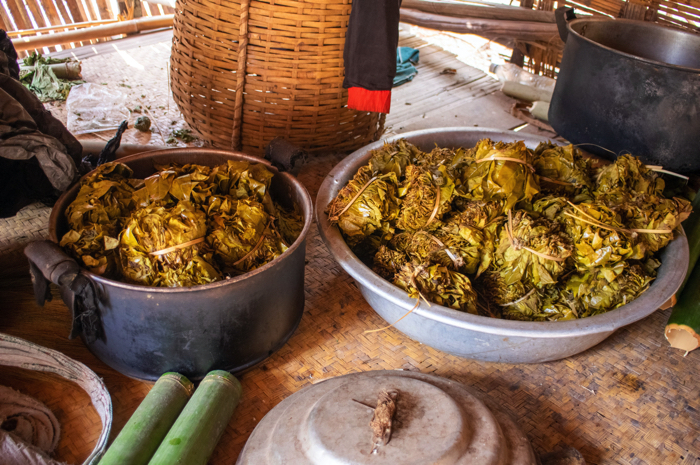- Project Leader : Yokoyama Satoshi (Nagoya University, Graduate School of Environmental Studies)
- Collaborators : Fujimoto Takeshi (University of Toyama, Faculty of Humanities)
- : Morinaga Yuki (Meiji University, School of Commerce)
- : Nakagawa Tomoyuki (Gifu University, Faculty of Applied Biological Sciences)
- : Kobayashi Satoru (Kyoto University, Center for Southeast Asian Studies)
- : Yamamoto Sota (Kagoshima University, International Center for Island Studies)
- : Yamazaki Sumiko (Aikoku Gakuen University, Faculty of Human Culture)
- : Sunano Yui (Hiroshima Jogakuin University, Faculty of Human Life Studies)
Outline of Research
Although various fermented foods are regularly eaten in mainland Southeast Asia, how such foods are positioned in the traditional food culture of specific regions or ethnic groups has not been fully studied. This research elucidates the positioning of fermented foods in the traditional food culture of several ethnic groups in Southeast Asia from a comprehensive perspective across academic fields. It also provides a cross-regional perspective through comparison with fermented foods beyond Southeast Asia. In order to conduct this research, one of the co-researchers will be stationed at the Bangkok Liaison Office of the Center for Southeast Asian Studies, Kyoto University during 2020, and will collect information on fermented foods in Southeast Asia. However, due to the impact of COVID-19, there is a possibility that the research meeting will be held online. In addition to this, the residence at the Bangkok Liaison Office might be suspended. Therefore, we will deal flexibly with these changes.
Description
In mainland Southeast Asia, for example, in areas where ethnic Lao people live, lactic acid fermented fish (Som-Pla), vegetables (Som-Pla), and pork (Som-Mu) are standard dishes. In addition, fish sauce (Nam-Pla) and shrimp paste (Ngapi) in the lowlands, and seasonings such as fermented soybean (Tua-Nao) in the mountainous areas are used to season dishes. It goes without saying that alcohol spirits (Lao-Lao) are also created through a process of fermentation. This array of fermented foods, seasonings, and drink is similar among other ethnic groups in Southeast Asia. Although fermented foods are completely embedded in the food culture of Southeast Asia, as far as the applicant knows, research on the positioning of fermented food in traditional food culture has not been carried out. This research considers fermented foods as an integration of local natural environment, microorganisms, livelihoods, and food preferences of ethnic groups. The purpose of this study is to clarify how fermented foods widely found in various places in Southeast Asia are positioned among the traditional foods of specific regions and ethnic groups. This will be augmented by comparing these food cultures to those found beyond mainland Southeast Asia.
A wide variety of fermented foods play specific roles. These include those that play a social role, such as ritual and festival liquor, those established as food preservation techniques, and those used as seasonings, all of them form the basis of food culture. This indicates that the positionings of fermented food in the region are also extremely diverse. Today, traditional food culture is being registered as an intangible cultural heritage by UNESCO. Studies focusing on fermented foods that strongly characterize the local food culture have important implications for the development of both area studies and food cultural research.
Research results on fermented foods in mainland Southeast Asia are limited to specific academic fields. Therefore, these results, which will be carried out from a comprehensive perspective across academic fields and from a cross-regional perspective, can be expected to propose new research areas to connect existing academic disciplines, including geography, anthropology, agriculture, and microbiology.


